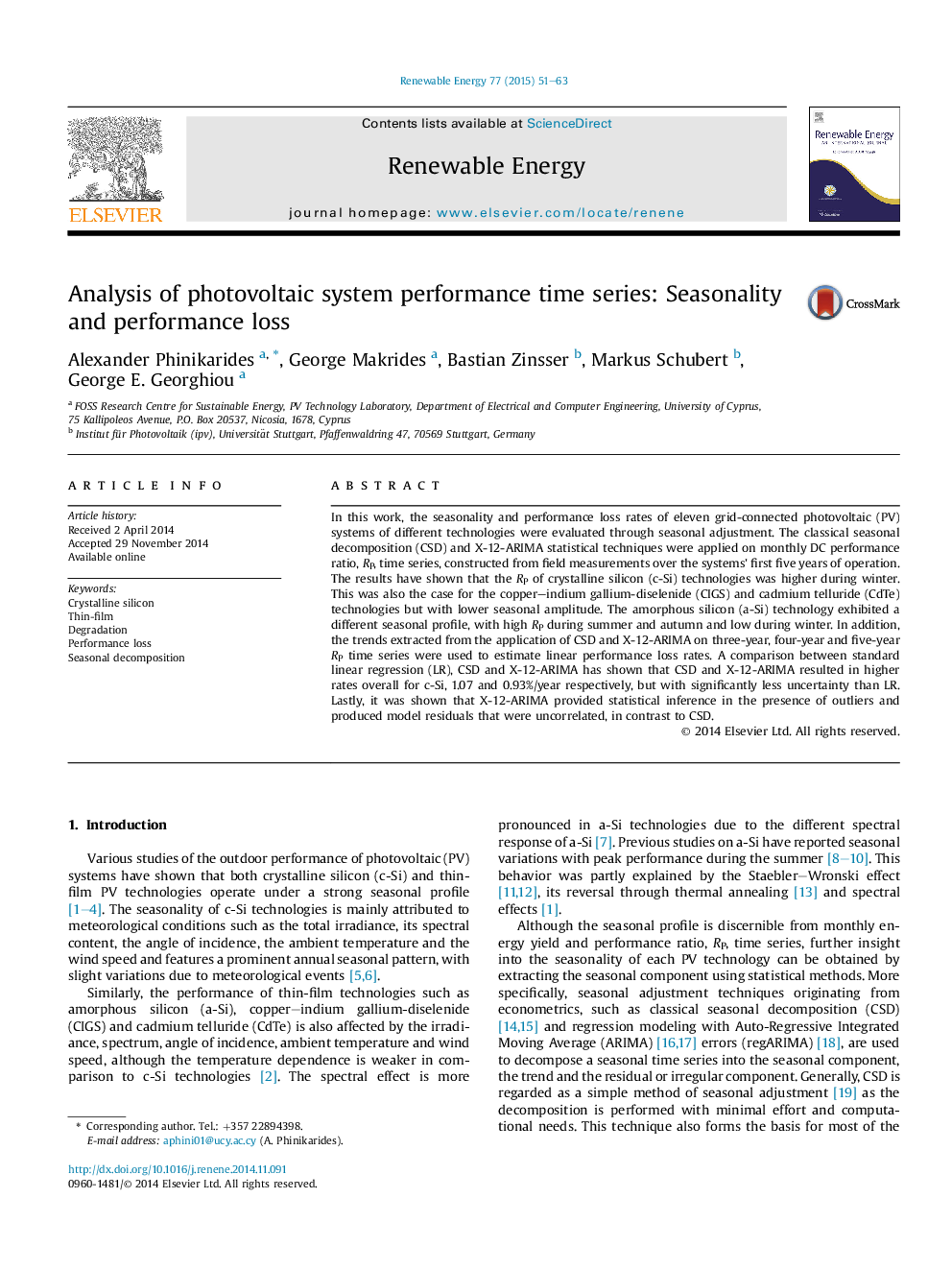| Article ID | Journal | Published Year | Pages | File Type |
|---|---|---|---|---|
| 6767235 | Renewable Energy | 2015 | 13 Pages |
Abstract
In this work, the seasonality and performance loss rates of eleven grid-connected photovoltaic (PV) systems of different technologies were evaluated through seasonal adjustment. The classical seasonal decomposition (CSD) and X-12-ARIMA statistical techniques were applied on monthly DC performance ratio, RP, time series, constructed from field measurements over the systems' first five years of operation. The results have shown that the RP of crystalline silicon (c-Si) technologies was higher during winter. This was also the case for the copper-indium gallium-diselenide (CIGS) and cadmium telluride (CdTe) technologies but with lower seasonal amplitude. The amorphous silicon (a-Si) technology exhibited a different seasonal profile, with high RP during summer and autumn and low during winter. In addition, the trends extracted from the application of CSD and X-12-ARIMA on three-year, four-year and five-year RP time series were used to estimate linear performance loss rates. A comparison between standard linear regression (LR), CSD and X-12-ARIMA has shown that CSD and X-12-ARIMA resulted in higher rates overall for c-Si, 1.07 and 0.93%/year respectively, but with significantly less uncertainty than LR. Lastly, it was shown that X-12-ARIMA provided statistical inference in the presence of outliers and produced model residuals that were uncorrelated, in contrast to CSD.
Related Topics
Physical Sciences and Engineering
Energy
Renewable Energy, Sustainability and the Environment
Authors
Alexander Phinikarides, George Makrides, Bastian Zinsser, Markus Schubert, George E. Georghiou,
